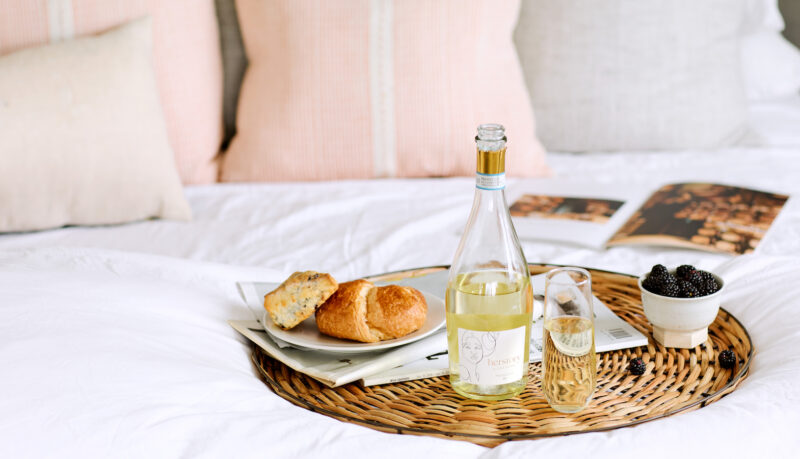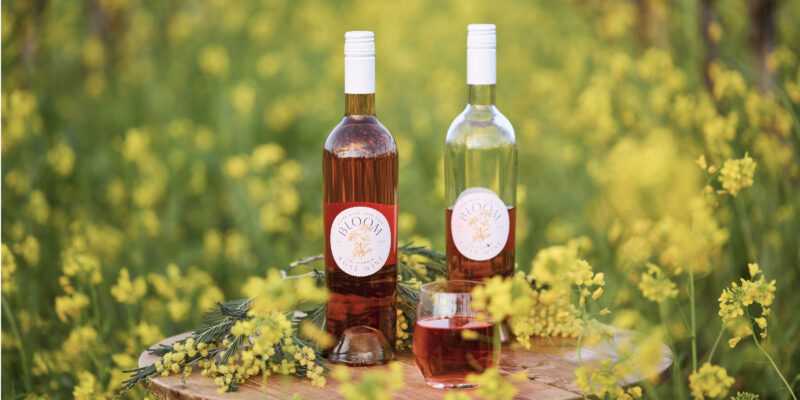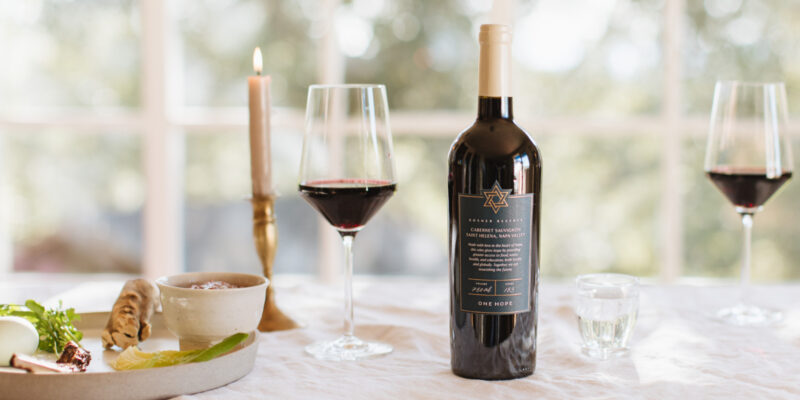Love wine but never had the nerve to go to a wine tasting? We get it. Plenty of people are a bit intimidated at the thought of going to a winery tasting knowing that they could be surrounded by people saying things like, “I can taste the dirt in this,” or, “The tannins in this are impressive,” knowing that their chief inner narrative would be, “What’s a tannin?”


Photo credit: https://stylingmyeveryday.com/2014/10/24/well-drink-to-that-how-to-throw-an-at-home-wine-tasting-party/
Good news, wine lovers. You don’t need to know a thing about tannins, acids, or vintage years to enjoy a wine tasting. The first rule to enjoying yourself is to throw out all the rules you think you need to know in order to enjoy a tasting experience. Wine is what the drinker makes of it, and everyone’s preferences are different. Here are six simple steps to enjoying a wine tasting, even if you’re unsure of whether to swish and spit or drink the whole glass.
- Swirl & Sniff. It’s like a scratch & sniff sticker, only better. You should absolutely plan to swirl the wine in your glass, and then lower your nose to the rim and inhale deeply before tasting. The swirling action allows oxygen to enter the wine and become more fragrant. And, while you may not be able to identify things like, “essence of oak” in the bouquet, your sense of smell plays a huge role in your sense of taste. Taking a strong whiff of the wine before tasting it primes your palate for the flavors to be expected.
- Swish & Spit or Swallow? This is perhaps the most commonly asked question about wine tasting. The thought that you should take the wine into your mouth and then spit it out was born out of a necessity to remain sober throughout the entire tasting. Clearly, if you drink five (or more!) full glasses of wine your decision-making process as to which one you liked the most will lean heavily towards the latter. But today most wineries are offering smaller portions for their tastings, generally just two or three ounces, and the chances of intoxication are pretty low. So, take the wine into your mouth, allow it to swish and dance over your tongue as you consider the flavors, and then swallow it. Or spit it out. It’s totally your choice, and both are totally acceptable. Hate the wine? Feel free to pour the rest of your sample into the “spittoon” bucket. This is also acceptable and commonplace at tastings. You can’t be expected to like them all, right?
- Ask Questions. Some people may know the names of popular wine regions and showy grape blends. Most won’t. Both are OK. If you feel like the wine steward is speaking French when they rattle off the vineyard names, grape varieties, or flavors you should be looking for, feel free to stop them and ask for clarification. Winemakers love to talk about these things and often forget that not everyone knows their jargon. If you want to do a little research before your tasting, look into what the region is known for. Certain grape varieties, like Chardonnay, take on characteristics of the soil where they are grown, meaning that a Chardonnay in an area known for producing great Chardonnay could be quite memorable. A quick Google search should suffice.
- Build a Budget. The cost of a wine tasting will vary greatly. They can vary anywhere from complimentary to upwards of $50 per experience. It’s never a bad idea to ask about the cost – and what is included in that cost – before choosing which wineries you’ll visit. If you luck into a value driven tasting, it’s considered polite to purchase a bottle at the end of the tasting.
- Take Notes. It’s unrealistic for anyone to be expected to remember all of the details about five wines considered in such a small window of time. No one expects you to do that. It’s totally acceptable to ask for a pen and paper at the start of your experience (plenty of vineyards will even provide this without prompting) for you to jot down notes as you go. There is no “right” or “wrong” when it comes to what to write, either. It’s just as acceptable to write, “notes of raspberry” as it is to write, “yuck.” Your notes are used to help you remember what you liked, what you didn’t, and why.
- Don’t plan on consuming solely wine during your experience. You should plan to drink water between the tastings, both to clear your palate as well as to keep you hydrated, as well as to consume small bites. Most wineries will provide a cheese board or nuts, but if they don’t, be sure to ask if you may order one. It highlights the flavor of the wine and keeps you from feeling woozy.




8 Comments
Thank you for explaining that it’s okay to ask questions if they are using terms or jargon that you aren’t familiar with. My husband and I are thinking about going on a wine tour this summer, but we’ve never gone to one before. We’ll have to keep this in mind since we really want to learn and have a fun experience together.
Thank you for your advice to ask questions. I’ve been wondering what advice we can get for our wine tour and tasting in a few months. I’ll be sure to keep this in mind so we can learn as much as possible.
I found your tip useful when you told us to swirl the wine in our glass first to allow oxygen to enter and take a strong whiff of it before tasting to prime our palate for the flavors to be expected. I’m thinking of buying a wine bottle this weekend, and I want to make sure I get a good one since I’m not quite familiar with them. I’ll be sure to remember this tip once I find a wine store nearby that also offers wine tasting.
I like how you mentioned that the likelihood of drunkenness is quite minimal and that the majority of vineyards give smaller servings for their tastings—typically only two or three ounces. I was in need of this post since I’m so eager to take my pals on a private brewery tour. I appreciate your assistance, and I think these wine tour etiquette tips would be incredibly helpful.
You made a wonderful point about how a wine tasting may range widely in price. The cost of each activity might range from being free to more than $50. Before deciding which vineyards to visit, it’s always a good idea to enquire about the price and what is included in that price. I am eager to plan a winery tour for August with my fiance. This will be our first time doing it, and we both like wine. I value the recommendations!
I thought it was interesting when you mentioned that it could be a good idea to do a little research before tasting wine. Would it be a good idea to bring a knowledgeable friend when you are going on a wine tour? I would think that a knowledgeable friend would be able to help you understand more about the wine you will be drinking.
What an invaluable guide for wine enthusiasts embarking on their tasting journey! Your article, “6 Great Wine Tasting Tips for Beginners,” is a treasure trove of wisdom and practical advice that will undoubtedly enhance the wine tasting experiences of newcomers.
Your first tip, encouraging beginners to trust their senses, sets the perfect foundation for exploration. It’s reassuring to know that appreciating wine is a sensory adventure, where personal preferences and individual perceptions hold great value. Your emphasis on taking time to observe the wine’s appearance, inhale its enticing aromas, and savor its flavors demonstrates the importance of engaging all the senses.
I particularly appreciate your suggestion to start with lighter wines and progress towards more robust varieties. This approach allows beginners to acclimate their palates gradually and develop an appreciation for the nuances in different wine styles. Pairing this tip with your helpful advice on understanding wine labels and grape varietals empowers newcomers to navigate the vast world of wines with confidence.
Furthermore, your emphasis on the significance of temperature and glassware showcases the attention to detail required for an optimal tasting experience. By highlighting the impact of serving temperature and appropriate glass shapes on a wine’s expression, you equip beginners with essential knowledge to elevate their enjoyment.
The inclusion of a tip on the importance of note-taking is both practical and insightful. Keeping a record of personal preferences, aromas, and flavor profiles not only aids in learning and discovery but also serves as a delightful memento of past wine encounters.
Your final tip, which encourages beginners to embrace experimentation and enjoy the process, is a delightful reminder that wine tasting is an adventure to be savored. By inviting readers to explore beyond their comfort zones and discover new wines, you inspire a sense of curiosity and a lifelong passion for the world of wine.
Thank you for sharing these invaluable tips, empowering beginners to embark on their wine tasting journey with confidence and enthusiasm. Cheers to you for your thoughtful guidance, and may it lead to many delightful discoveries and memorable moments for all those venturing into the realm of wine!
My friends are convincing me to go on a wine tasting with them next week just so we can all try out something new. I do wanna go so here I am. Thanks for telling me that the wine becomes more aromatic as a result of the swirling movement, which allows air to enter. Additionally, you explained how your sense of smell greatly influences your sense of taste, even if you might not be able to detect elements like the “essence of oak” in a bouquet.